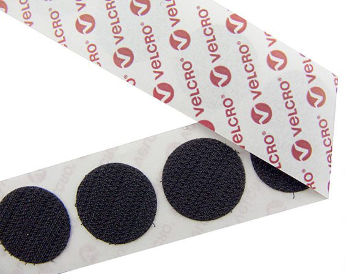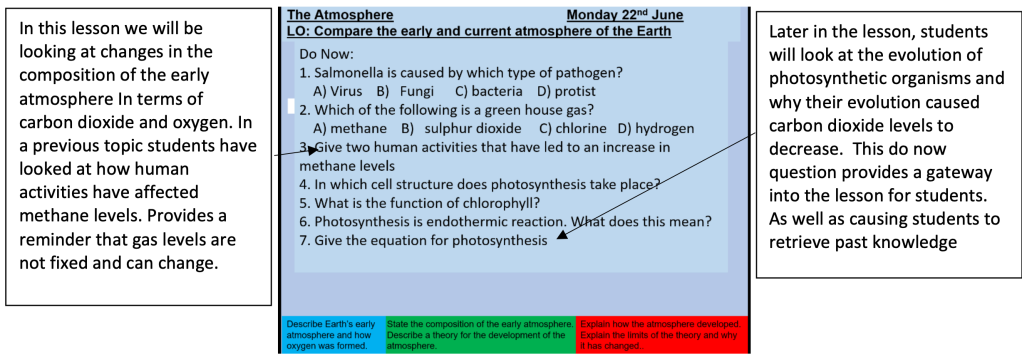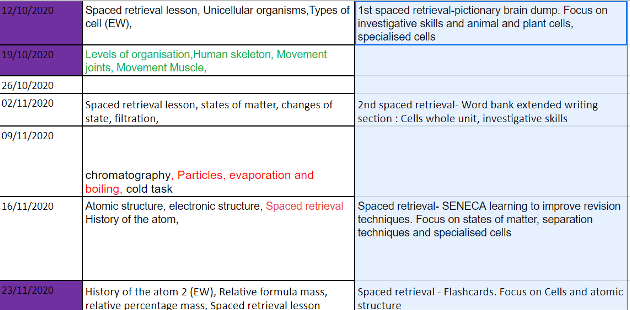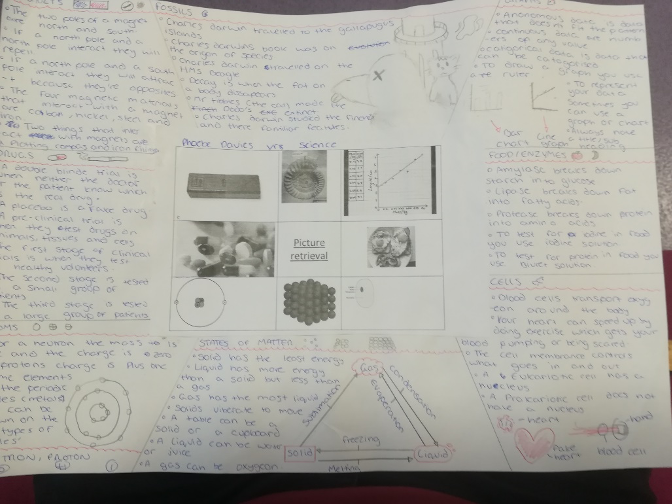Ryan Badham (@mr_badham) is a second in charge of Science and an Associate Vice Principal at The Holmesdale School.
How do you ensure that teaching in your subject enables pupils to know and remember more? This question was posed to me by a member of my school’s leadership team and the following blog is my thoughts and opinion on this question. The below are based on my (hopefully) correct interpretation of the research and from conversations and reading of the excellent work that others have done and any mistakes are my own and not theirs.
I have written the blog in four potentially arbitrary sections as they all overlap. A lot of the information below will be known to most but I thought I’d share it on the off chance it helps even a few people. There is also a link to my KS3 Google Drive that contains the resources discussed below. If I have misinterpreted anything or made any mistakes please get in touch, always willing to learn more.
The 4 sections are:
- Retrieval practice in lessons – Do Nows, selection of questions in the do now and spaced learning
- Curriculum design – 5 year curriculum plan, interweaving and cross curricular links
- Questioning
- Assessment and assessment design
Section 1: Retrieval practice
Retrieval practice is everywhere in education at the moment and is a commonly discussed technique and it is also one of great importance in ensuring students know and remember more. Retrieval practice involves recalling something you have learned in the past and bringing it back to mind; it is far more effective than more frequently used strategies such as re-reading. Retrieval practice strengthens memory and makes it easier to retrieve the information later (Barenberg Roeder & Dutke, 2018; Roediger & Karpicke, 2006). Retrieval practice needs to occur a reasonable time after the topic has been initially taught and needs ideally to take the form of testing knowledge, either by the teacher (for example questioning, a test or getting pupils to write a mind map) or through pupil self-testing.
The most common form of retrieval practice consistently applied across my school is the use of low-stakes quizzes in the form of a Do Now. This is a technique from Doug Lemov’s Teach Like a Champion and involves several low-stakes (NO GRADING!) questions at the start of the lesson. This can be based on what students have learnt in the previous lesson or more usefully in a ‘last lesson, last week, last term’ format. Knowledge begets knowledge begets knowledge. The Do Now is not simply a technique to settle a class (the original reason it was brought in at my school) or even to ensure that students remember more from previous lessons but can ensure students learn more in a given lesson in my opinion. Another lens through which I have started to view this is ‘The Matthew Effect’ aptly summarised as ‘the rich get richer, and the poor get poorer’. Normally used in discussions over reading, I think it is equally apt in terms of knowledge acquisition and retention. The more a student already knows, the more they can go on to know.

When teaching or preparing lessons I keep a simplification of this idea in my mind and imagine the knowledge that students should of learnt in the past as Velcro sticky pads and the learning for today’s lesson as a picture frame/poster. Therefore, the more areas of pre-requisite knowledge I can activate during the lesson, the more likely the poster is to stick.
An example of this in practice is shown below.

If retrieval practice is one side of the Do Now coin then the other must be spaced or distributed practice. Studies have shown that students who engage in spaced practice learn the concepts better and also show enhanced understanding—not just memorisation—of how the concepts apply to new situations. Being able to apply knowledge to a new situation is known as transfer of learning and is an important goal of education (Agarwal et Carpenter, 2020). This spaced practice can be enforced through the use of ‘last lesson, last week, last term’ Do Now formats or through the use of retrieval roulettes (Boxer). Spaced practice naturally feels hard for students and can add in a layer of challenge or create a desirable difficulty. Because spacing is hard, it is more effective. Shown below is an example of a year 7 science retrieval roulette. Whilst I love a retrieval roulette, I think they should be used alongside teacher input and the careful selection of questions to activate salient prior knowledge as discussed in the previous section.

We have started to implement ‘spaced retrieval’ lessons at KS3. These spaced retrieval lessons take different formats throughout the year and also act as a mechanism of teaching students revision skills. Varied types of retrieval practice have been shown to better allow students to transfer learning from one situation and apply it successfully in another. The next step for me in science would be to ensure that retrieval practice is systematically mapped at KS3. This will allow teachers to know what content their students should be retrieving each spaced retrieval session. The figure below shows the beginning of that thinking. Similar to with the Do Now retrieval practice, I have selected topics that form gateways into forthcoming topics. Damien Benney (https://mrbenney.wordpress.com/2016/11/03/optimal-time-for-spacing-gaps/) has written a fantastic blog looking at spacing intervals and is well worth several reads.


At the end of our KS3 lessons in science, we have trialled having a mind map (image below) that students incrementally add to and complete as they progress throughout a topic in order to encourage students to start making links between topics. This link making is important at both a teacher level and a student level. Students have still struggled with making those links and still seem to treat lessons as individual units so more work is required here.
Section 2- Assessment
The test-potentiated learning, was first identified by Izawa (1966), who suggested that more retrieval attempts lead to greater potentiation. This study and others like this brought into the light the idea that testing itself is a learning activity. With this in mind, the design of our assessments becomes increasingly important as they are not just a feedback tool for teachers but also produce learning. Assessments are cumulative and therefore hark back to knowledge and skills gained throughout the year, additionally causing students to retrieve this information again. In science, the cold tasks (mid-term assessments) are purely knowledge-based and contain questions direct from a retrieval roulette. Deep Ghataura (https://dghataura.wordpress.com/) understands far more about this than myself and has written several blogs on the topic and several researched talks.
Section 3- Questioning
Effective questioning is a low effort, high impact technique. The implementation of techniques from Teach Like a Champion have been crucial in raising the standard of questioning in my department. Techniques such as cold call and no opt out ensure that the participation ratio in lessons is high. This ensures that students cannot ‘switch off’ and must remain ready to be asked a question at any time, resulting in as many students thinking about the question as possible and as Dylan Willingham so succinctly put, ‘memory is the residue of thought’. As well as increasing the ‘participation ratio’ in lessons, of equal importance is increasing the ‘thinking ratio’ and can be done using techniques such as stretch it, where the reward for a correct answer is a harder question. For more information on this please see this fantastic blog by Adam Boxer https://achemicalorthodoxy.wordpress.com/2020/02/09/ratio/.
Another technique that I use is ‘flip the question’. This involves starting with a central piece of knowledge, for example: the chloroplast is the site of photosynthesis. When learning this it is important to elevate it from the base level of rote memorisation and instead ensure this nugget of knowledge has plasticity. Students can regurgitate what they have memorised based on cues but this will not help them transfer that knowledge to unknown situations in an exam. Shown below are the sequence of questions that I use with photosynthesis but this same technique is applicable to far more than just this example.
| The chloroplast is the site of photosynthesis |
| Where in a plant cell does photosynthesis occur? |
| What is the function of the chloroplast? |
| What affect would removing the chloroplast have on a plant cell? |
| Why do chloroplasts contain chlorophyll? |
| Suggest why sea slugs steal chloroplasts from algae |
| The Calvin cycle is an important part of the light-independent stage of photosynthesis. Suggest where in a plant cell the Calvin cycle occurs |
I think this approach naturally lends itself well to subjects with larger amounts of declarative (factual) knowledge. Being a biology specialist, I find such a technique more useful in biology than physics or chemistry but that could also be due to my greater knowledge within that subject.
Section 4 – Curriculum
In my opinion the sequencing of a curriculum is one of the most important ways that curriculum choices can affect how much students know and remember. In terms of the curriculum, I think two of the most important questions are the what and the when. If you are looking to ensure that teaching enables students to know more and remember more then it becomes increasingly important to know what you want them to know more and remember because, unless that knowledge is explicit, you leave it to the individual teacher’s interpretation which will inevitably lead to inconsistency. We have used Adam Boxer’s idea of core questions to support with this (https://achemicalorthodoxy.wordpress.com/2018/03/02/fixing-key-stage-3-core-questions/).
Interleaving is an often-misunderstood concept and I know that I am not exempt from that (and have misunderstood it in the past and still might now). Previously, I think I misunderstood it and looked at it on a wider curriculum level where you would teach Topic A, Topic B, Topic A, Topic B which I know think is a misunderstanding of it and instead I think of it now more at a lesson level. For example, when introducing energy at KS3 we look at kinetic energy first. Students will practise calculating kinetic energy, we then move onto gravitational potential energy and now ensure that within our questions we interleave between the two equations to stop students from shallowly knowing what equation to use. This is the purpose of interleaving as it creates desirable difficulties (Bjork & Bjork, 2011) which aids longer term retention and also transfer to novel situations.

A number of researchers have stated that knowing things makes it easier to learn new things. In designing our new curriculum, we built upon work that had been done previously in the department and ensured the order of units made sense. We aimed to logistically place units in an order that built upon the previous units’ information that would therefore increase the likelihood of students knowing more and remembering more.
Link to KS3 google drive: https://drive.google.com/drive/u/3/folders/1wySfljDjt87uuc7oLUVMrgO8m8jYVtwd
References
Barenberg, J., Roeder, U.-R., & Dutke, S. (2018). Students’ Temporal Distributing of Learning Activities in Psychology Courses: Factors of Influence and Effects on the Metacognitive Learning Outcome. Psychology Learning & Teaching, 17(3), 257–271. https://doi.org/10.1177/1475725718769488
Roediger, H. L., & Karpicke, J. D. (2006). Test-Enhanced Learning: Taking Memory Tests Improves Long-Term Retention. Psychological Science, 17(3), 249–255. https://doi.org/10.1111/j.1467-9280.2006.01693.x (pdf here)
Rawson, Katherine & Kintsch, Walter. (2005). Rereading Effects Depend on Time of Test.. Journal of Educational Psychology. 97. 70-80. 10.1037/0022-0663.97.1.70.
Agarwal, P. K., Nunes, L. D., & Blunt, J. R. (2020). Retrieval practice consistently benefits student learning: A systematic review of applied research in schools and classrooms Manuscript under review.